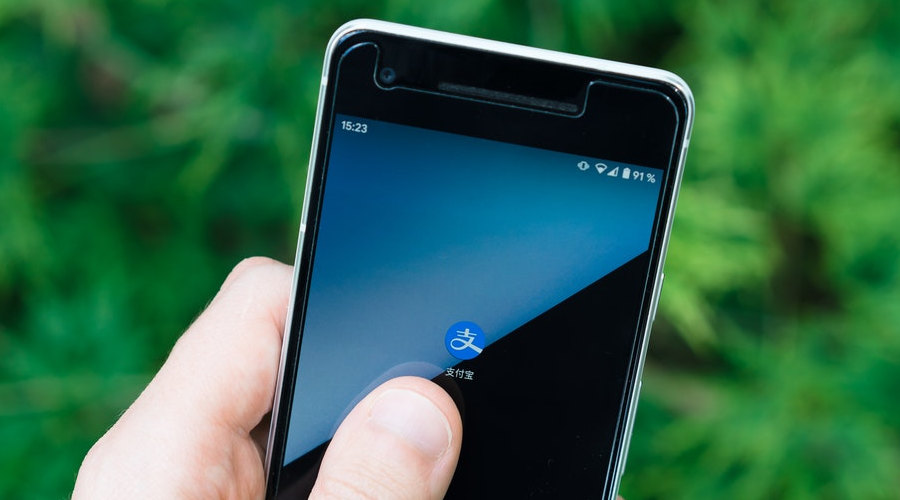Your website is arguably the first resource customers visit to learn more about your business. While English is considered the international language of business, you can’t afford to ignore other languages.
As the Internet turns the world into a global village, localizing your content will give you a competitive edge over rivals. Other popular languages include Spanish, French, Portuguese, German, Mandarin, Arabic, and Russian. One of the best ways to make a desirable first impression is to translate your website into your target audience’s preferred language.

Translate your website to make a great first impression on potential customers.
Internet Trends and Statistics Favor Multilingual Websites
Although more than 50% of websites are in English, it’s not a native language for most internet users. Statistics show most online shoppers prefer patronizing and buying from websites in their native language. That means you’ll gain a competitive advantage by merely providing language options to your visitors.
Most websites that localize their websites witness a significant increase in visits, sales, revenue, conversions, and overall engagement. Such positive results require dedication from website owners. Apart from translation, it’s advisable to localize it by taking into account context-specific nuances.

Website translation can result in a greater number of visitors and more engagement from international markets.
For example, British and American English differ in various ways, even though they’re the same language. An American reading about petrol, holiday, and bonnet might not relate when they’re used to gasoline, vacation, and hood. The same is true for Brazilian and European Portuguese, as well as Latin American and European Spanish.
You can’t possibly cater to all the variations, which is why thorough keyword research is essential to your international SEO. Remember, Google might be the dominant search engine worldwide, but it’s not always the preferred choice in individual countries.
Baidu, Yandex, and Naver have more sizeable market shares in China, Russia, and South Korea, respectively. Your efforts to increase visitors from these countries must take into account differences in online search behavior.
Get a Free Quote
Want to translate your website? Not sure where to start? Talk with our website localization specialists to get a free quote and to get your questions answered.
Get a Free Quote
Best Practices for Building a Multilingual Website
Think of your multilingual website as a welcome mat for global visitors. It provides a first impression that can improve your ROI if done right. Your website’s design and layout play an essential role in this regard. A flexible template should be easy to customize while maintaining core elements.
Another best practice involves catering to factors such as internet speed, browser type, and data cost. Visitors from your target countries might not enjoy the same level of comfort, affordability, and efficiency that you’re used to in yours. Do they have unlimited data plans and Wi-Fi? Which devices do they predominantly use to access the internet? This kind of data helps you optimize your website accordingly.

Consider: are your potential customers in the target market more likely to be using your site on mobile or desktop? Are they likely to be using fast Wi-Fi? Or slow and expensive cellular data?
It’s advisable to prioritize content that’s most relatable to your target market for translation. Examples are blog posts, product demos, and other multimedia content. You don’t have to translate press releases, employment announcements, and other unnecessary items.
It’s crucial to hire a qualified translator to maintain brand and tone consistency throughout your website and across multilingual pages. You don’t want visitors to feel like the website has clashing personalities. You’ll achieve this consistency by creating a style guide and glossary even if you work with multiple translators.
Sometimes you’ll have to transcreate to have an emotional impact on a new audience. Transcreation goes beyond accurate translation. It involves recreating your website content from scratch while changing various elements and messaging.
Other best practices include customizing graphics and images, featuring one language per page, and creating snippets for each language.

Think about whether the depictions in your images will resonate with your target market. Will they even know what is supposed to be shown in the picture?
Also, make it intuitive for users to toggle between languages. While Google, Bing, and various WordPress plugins could hypothetically assist with website translation, they’re not accurate enough to give a good impression to customers. The best solution is to hire a competent translator who will ensure grammatical accuracy and contextual sense.
Regardless of whether you are marketing your small auto repair business, or you’re one of the biggest automakers, a high quality translated website has many benefits.
Like the Article?
Share with all your friends by clicking on a social sharing button below.
What are the Benefits of Website Translation?
The most apparent benefit of a multilingual website is access to a broader audience. An enhanced global presence also increases your financial opportunities. The US market accounts for less than a fifth of worldwide internet traffic. It makes business sense to expand to cost-effective Spanish, French, German, and Portuguese-speaking markets. Other benefits include:
- Improve SEO
Multiple languages allow you to rank for more keywords than your competitors, which increases organic traffic. Search engines will send new users your way so long as your content satisfies their search intent. For example, if a Mexican does a web search, Google is more likely to direct them to the Spanish rather than the English version of your website.
- Higher conversions
Statistics show customers spend more time and money on websites in their native language. That means you’re more likely to convert leads if they comprehensively understand your products and services. A language they’re comfortable with helps build trust and loyalty, which turns them into repeat customers.

Using effective website translation can increase the number of visitors coming to your site. It can also increase the conversion rate on your landing pages.
- Better brand image
You can’t build a global brand without reaching out to non-English speakers. Web translation is the most cost-effective way of increasing your brand awareness and market value.
- Competitive edge
Nearly 50% of internet users are in Asia. You can gain easy access to this lucrative market by making culturally correct website translations. It also offers a potentially higher ROI compared to the more mature and competitive English-speaking markets.
- Improved user experience
A website with an attractive UI is no longer good enough to keep users engaged. With so many well-designed options to pick from, most consumers have more than enough choices regarding English language websites. Customizing the language makes them more familiar with your brand and expands your user base.

Pay close attention to the UI of the translated website. Make sure that it is attractive and user friendly in every target language.
- Positive results for duplicate content
Although duplicate content typically attracts penalties from Google, the practice favors multilingual websites. The search giant uses hreflang tag attributes to determine your site’s language and direct users to the appropriate page. The tags allow bots to index multiple translations of your website content without demoting it in search results. It also boosts traffic because Google can accurately direct users to the proper version depending on their region or language.
A multilingual website also shows cultural sensitivity towards your target audience. Your prospects will appreciate the effort to understand the finer details of their heritage instead of simply directing them to the English version. Localization increases their likelihood of identifying with your brand over your competitors.
What’s The Best Website Translation Solution?
Major browsers such as Google, Safari, Firefox, and Bing provide various forms of language translation service. Although this service is accessible via browser extensions and WordPress plugins, it’s not always grammatically or factually accurate.

Translating a website with pure machine translation, such as from Google Translate, is likely to give visitors a bad impression of your company.
The best solution is outsourcing to a translation and localization service provider. These experts ensure your web content conforms to the appropriate cultural nuances of your target market, including idioms, metaphors, and analogies. They also provide real-time interpretation services that capture details such as inflection and tone.
Website translation is essential to various industries, such as construction, healthcare, real estate, manufacturing, and IT. It also applies to different types of content, including marketing materials, user guides, and medical treatment plans.
Read More
Learn how to do DITA XML localization the right way:
How to Translate DITA Projects [Step-by-Step Guide]
Final Thoughts
A multilingual website is vital to your growth and expansion plans. It offers several benefits that provide value for money and a healthy ROI. It’s also not as hectic as crafting a marketing campaign from scratch. You can start by translating your online properties into your target audience’s language of choice. Once localization efforts start bearing fruit, initiate additional marketing strategies to achieve your objectives. Request a quote today from language management experts for more details.
Like the Article?
Click here to share on Twitter>>
Tweet
Click here to follow IVANNOVATION on Twitter and be first to learn about our new content>> Follow @ivannovation
Get free localization tips straight to your inbox!
- Get tips on how to translate your website, marketing materials!
- Get actionable advice to help you succeed with localization.
- Be the first to access free language and management tools.




Thanks for sharing nice post on how to translate your website